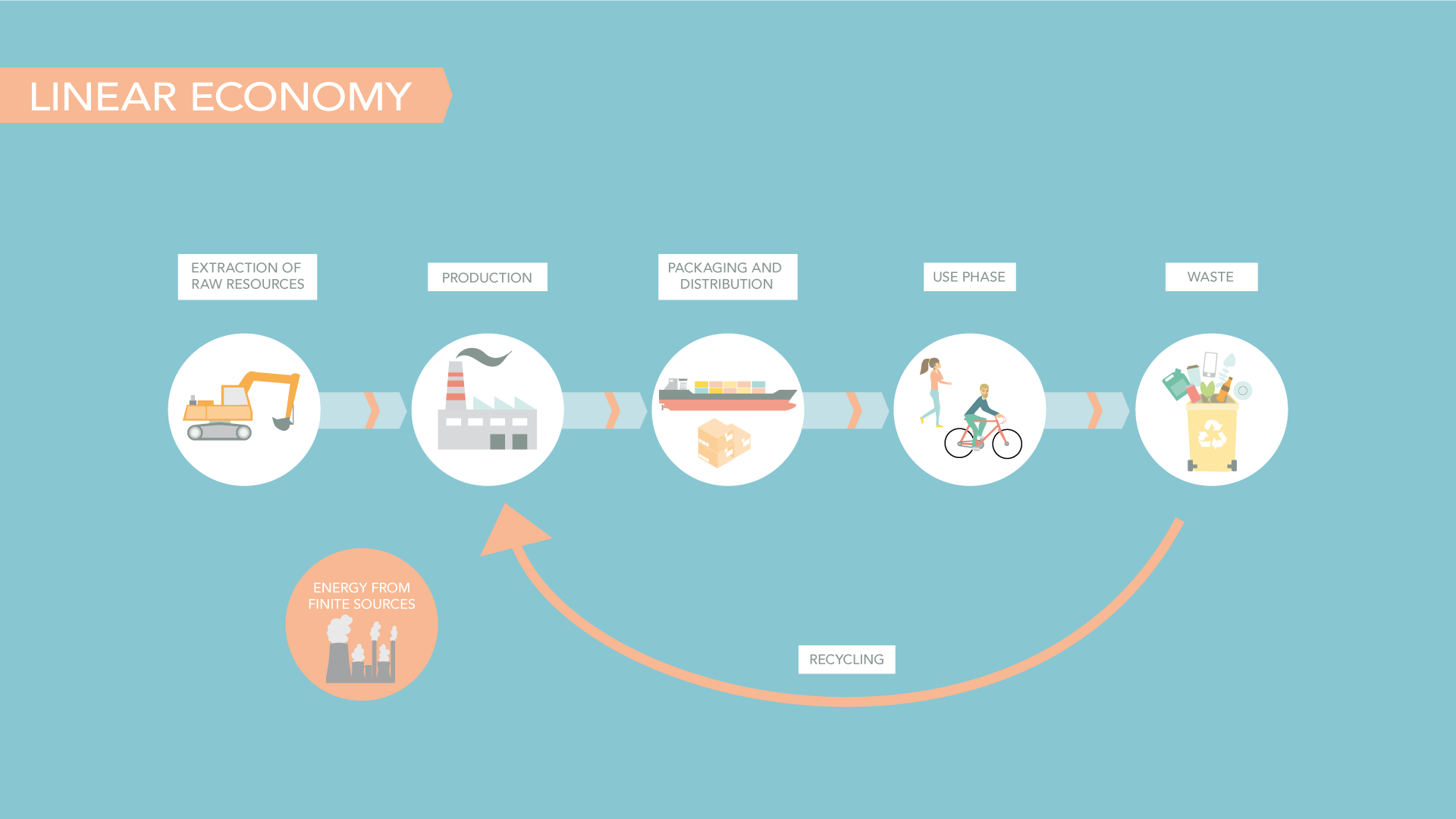What is a circular economy?
 Beginning on the left, you see the first step. The first step is that raw materials are extracted. And after this, materials and components are manufactured and assembled into the products. The products are packed and distributed often worldwide in the next life cycle phase. Then the products are used. In this using phase, some products, like, for instance, washing machines or coffee makers, need additional energy and consumables like, for example, washing detergent or coffee beans and water. Finally, at the end of the product’s life, it becomes waste or is incinerated. The energy currently used for all these product life phases is mainly from fossil fuels, which means from finite resources. Sometimes a small amount of material, for example, the packaging, is recycled and used again. Still, even that is mainly downcycled, which means the quality of the material is downgraded, and the material can not be used for the same use a second time, but only for minor purposes. For example, when plastic materials are recycled, the plastic usually gets weaker and cannot be used for the same application as before, but only for simpler products like park benches, where the material characteristics do not need to be so complex.
Beginning on the left, you see the first step. The first step is that raw materials are extracted. And after this, materials and components are manufactured and assembled into the products. The products are packed and distributed often worldwide in the next life cycle phase. Then the products are used. In this using phase, some products, like, for instance, washing machines or coffee makers, need additional energy and consumables like, for example, washing detergent or coffee beans and water. Finally, at the end of the product’s life, it becomes waste or is incinerated. The energy currently used for all these product life phases is mainly from fossil fuels, which means from finite resources. Sometimes a small amount of material, for example, the packaging, is recycled and used again. Still, even that is mainly downcycled, which means the quality of the material is downgraded, and the material can not be used for the same use a second time, but only for minor purposes. For example, when plastic materials are recycled, the plastic usually gets weaker and cannot be used for the same application as before, but only for simpler products like park benches, where the material characteristics do not need to be so complex.
In summary, in a linear economy system, the products are designed, manufactured, used, and thrown away so that we can speak about our current economy as a take-make-waste economy.
In this approach, the vast amount of raw resources extracted from the Earth is loosed forever – and even more harmful; most processes related to the manufacturing, use, and disposal of the product cause and support climate change, plastic pollution, and other negative environmental impacts. Furthermore, the huge problem is that our resources are not endless, and the everlasting extraction of precious resources like ores is causing substantial negative environmental impacts that are often non-reversible.
That is when the circular economy comes in. Contrary to a linear economy, a circular economy functions like nature.
 Nature uses all resources over and over, and there exists no concept of waste. Everything that is not in use becomes food and nutrients for another organism. These are perfect endless circles of resources. So, like in nature, in a perfect circular economy, all used and needed resources remain in closed loops and are used forever and ever. In theory, materials, parts, and products are created once and then used over and over; companies share resources, and waste becomes “food,” which means resources for another company or usage. You can see in the graphic that materials or parts can return to different stages of the resource circle. For example, parts of a used computer can be reused for another electronic device, or a chair can be upholstered and used again. All used energy is renewable energy. So nothing is wasted, and there is no need to extract more and more new resources. Doesn’t this sound great? Yes, and many countries and companies have already adopted the concept of a circular economy in their sustainability strategies. Still, the transition has many obstacles, such as a lack of knowledge or infrastructure. And not least, everything needs to be redesigned to work in a circular economy.
Nature uses all resources over and over, and there exists no concept of waste. Everything that is not in use becomes food and nutrients for another organism. These are perfect endless circles of resources. So, like in nature, in a perfect circular economy, all used and needed resources remain in closed loops and are used forever and ever. In theory, materials, parts, and products are created once and then used over and over; companies share resources, and waste becomes “food,” which means resources for another company or usage. You can see in the graphic that materials or parts can return to different stages of the resource circle. For example, parts of a used computer can be reused for another electronic device, or a chair can be upholstered and used again. All used energy is renewable energy. So nothing is wasted, and there is no need to extract more and more new resources. Doesn’t this sound great? Yes, and many countries and companies have already adopted the concept of a circular economy in their sustainability strategies. Still, the transition has many obstacles, such as a lack of knowledge or infrastructure. And not least, everything needs to be redesigned to work in a circular economy.

